With the scarcity of military baseball items that surface in online auctions, estate and garage sales, antique stores and from other collectors, we are left with very few options when it comes to building out a well-rounded collection. Our collection now includes a handful of vintage uniforms and jerseys, a selection of gloves, a ball cap, a few hundred photographs, a mix of various ephemera, spikes, and a (World War II U.S. Navy softball) bat. Throughout our years of curating this collection, we have been searching for the one item that one would imagine to be prevalent in a baseball collector’s cache. However, due to their scarcity, we have yet to acquire an authentic military baseball.
In a militaria discussion forum, a fellow collector posted a question regarding the veracity of a baseball in an eBay auction listing. Described in the listing as a Special Services U.S. Army ball and used by troops during World War II, the accompanying photos painted a picture that the ball is anything BUT authentic. The collector’s concerns were absolutely warranted. How does one accomplish due diligence in determining the authenticity of a World War II military baseball?



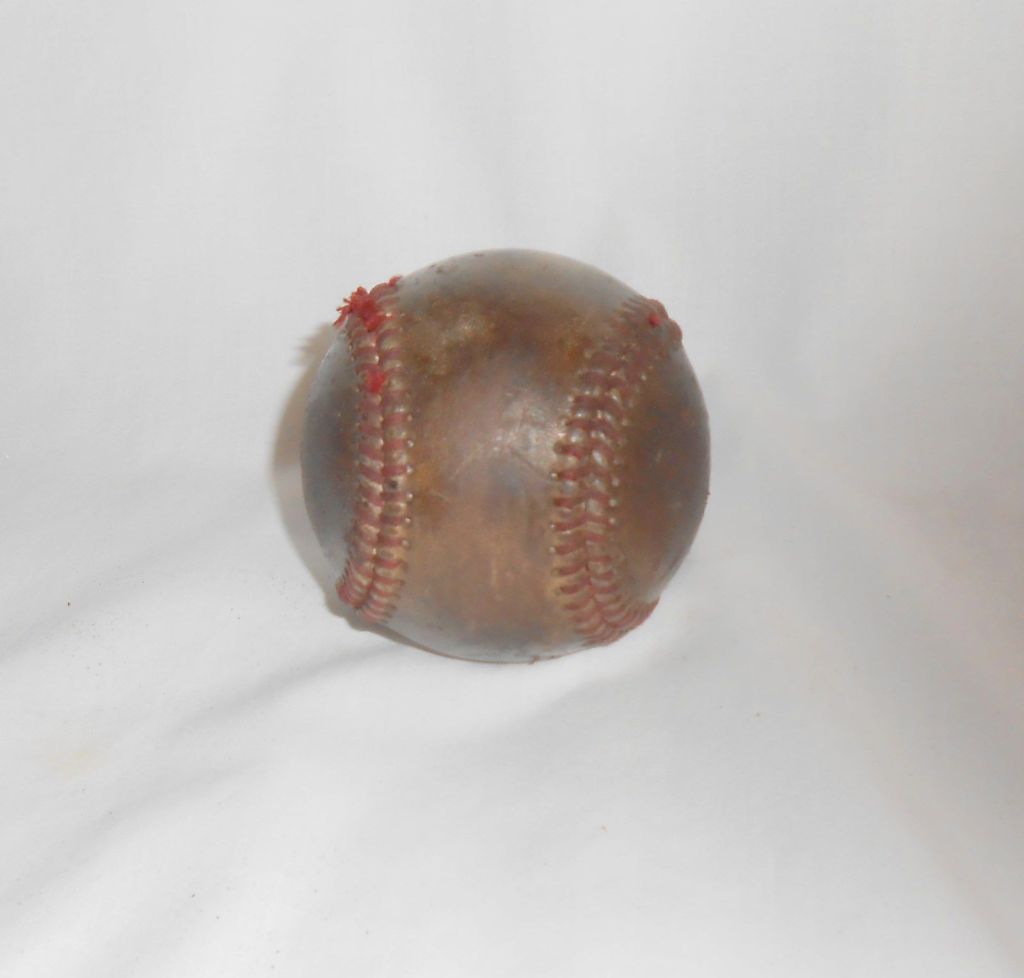

Manufacturers’ Markings
The equipment used by the armed forces was provided through several channels including direct purchase with recreation funds from service team exhibitions, donation from major and minor leagues, and donations from manufacturers. All the balls were stamped by their respective manufacturers to show their brand and models as well as official league information.[1]
Military Markings
Not every baseball used by the armed forces bore a mark indicating military use. Those that did were stamped by the baseball manufacturers as they were stamped with the standard model, league, and maker’s markings.[2]
Surface Wear
Turning attention to a contemporary game-used baseball whether it was for a professional, collegiate, or sandlot game, wear will be presented the same. Balls will show signs of bat impact, scuffs from caroms off hard surfaces, warning track dirt, and even grass stains. Balls that were used in games and relegated to batting practice will be battered and heavily soiled and yet the manufacturer’s markings will still be visible, albeit obscured by wear and abrasions.



The ball in the auction listing presented numerous anomalies that were contrary to what one can observe when compared with known game-used, vintage baseballs. Addressing the problematic baseball, one must analyze what is visible.
- The surface of the ball has an extremely dark caste that is very evenly distributed around the entire ball. The coloring bears no resemblance to any known game-used balls.
- The ball has a very clear and crisp stamping of a large block lettered “U.S.” that shows no signs of wear – another oddity considering that the ball is being presented as game-used. The stamps are quite obviously applied over the top of the substance used to synthetically darken the hide.
- No visible manufacturer’s marks. Considering that the enormous stamped “U.S.” letters are clear and easily readable, the logo, league markings, trademarks, etc. are not present.
- The absence of bat marks or scuffs from game use.
Auction listing issues
- Low-quality photographs
- Repeated auction listings featuring baseballs with the same concerns.
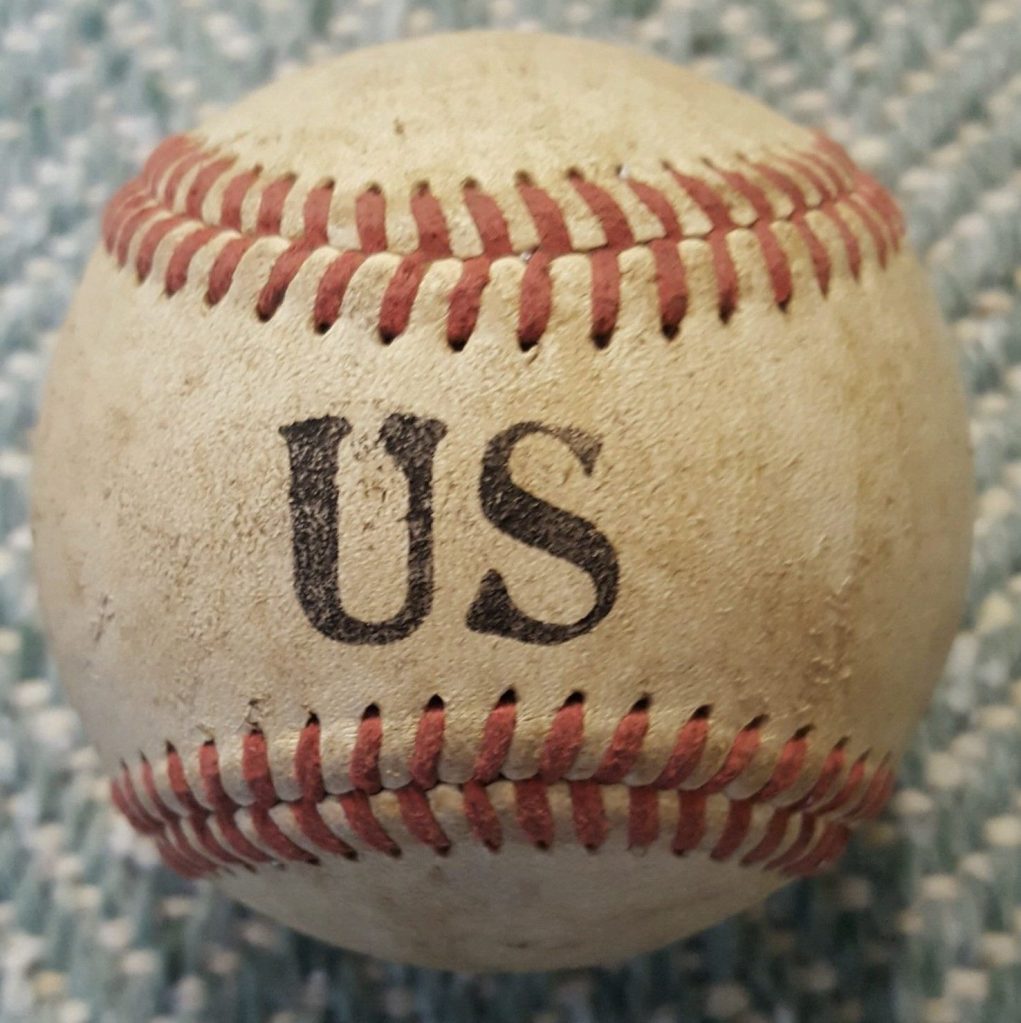
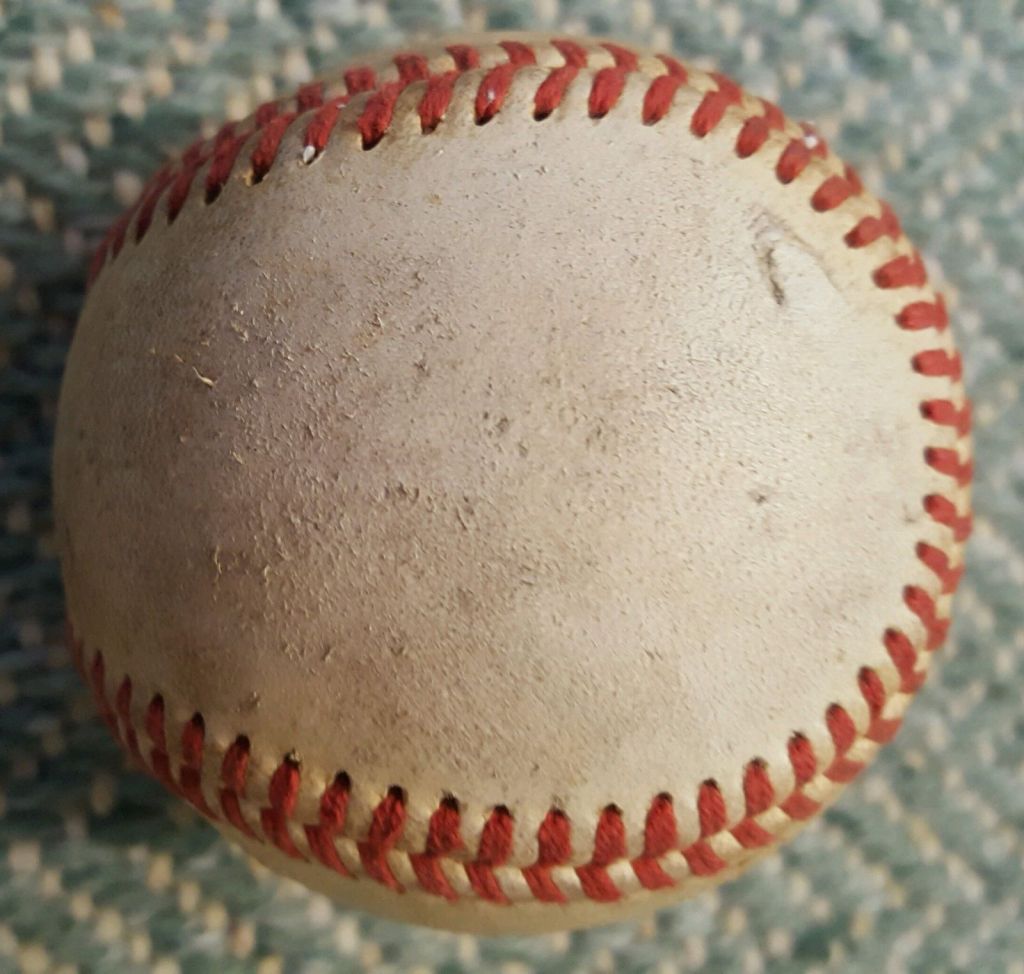


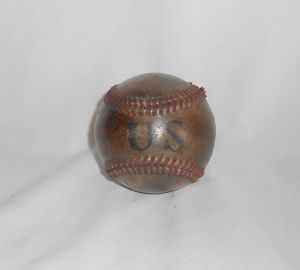
Once the balls are ruled out as authentic, we can employ further analysis to understand what factors are at play with these creations. Using a natural brown dyeing agent such as coffee, tea, or cola, the balls are stained evenly to give them an unnatural aged look. In some examples, the balls have been manually scuffed to give the appearance of use to the untrained eye. After the surface is sufficiently darkened and aged, they are marked with the large, stenciled U.S. letters.
There are several sellers attempting to cash in on collectors who lack experience and knowledge of vintage wartime game-used baseballs. As with any substantial purchase, research and knowledge are the best tools that can be employed to prevent a regrettable purchase. “Gut instinct” is the first step in the due diligence process. If one has never seen an authentic piece, trusting an online individual whose goal is to sell one to you is ill-advised. In the absence of comparative analysis, it is better to avoid the purchase.
The issues with the suspect baseballs are easy to pinpoint when one analyzes the specific trouble areas. Comparing these obvious fakes against genuine wartime game-used military baseballs illuminate the problems and demonstrate the fraud being perpetrated to unsuspecting collectors.

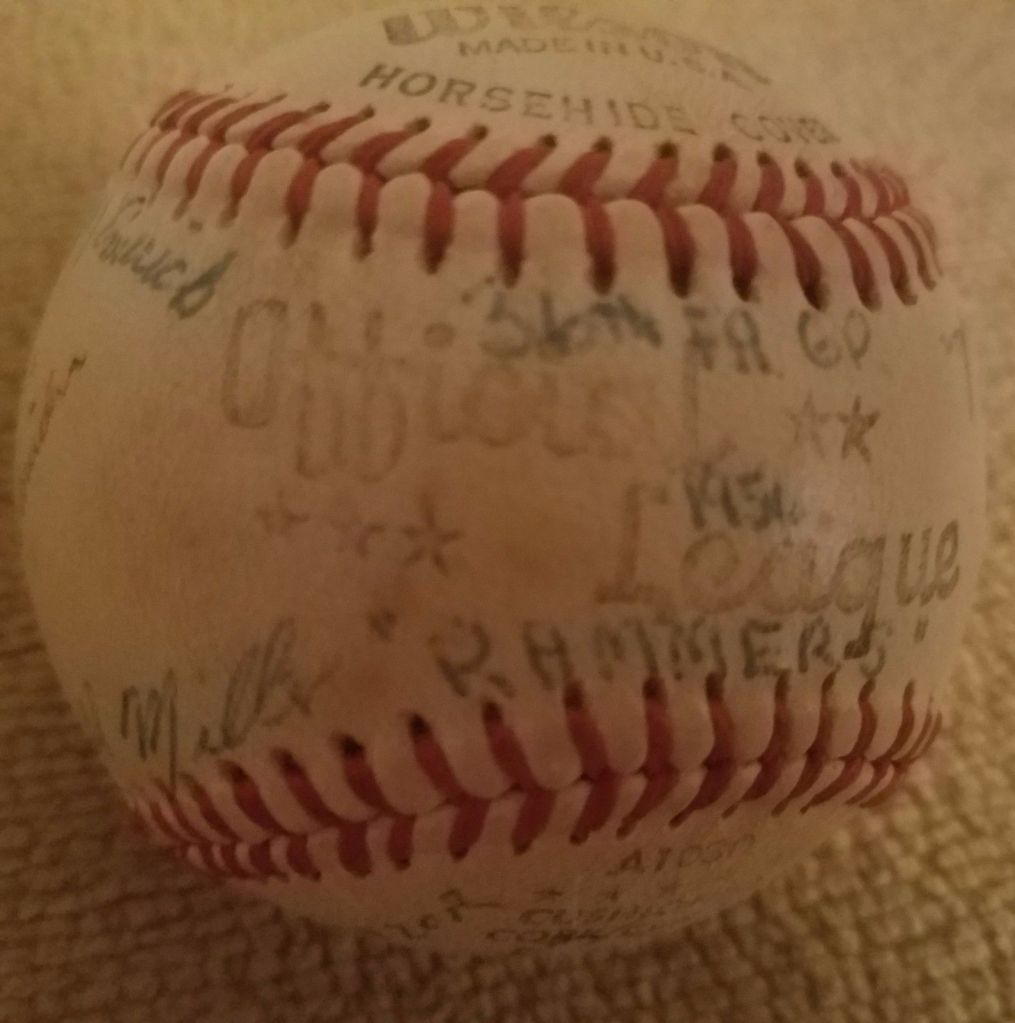

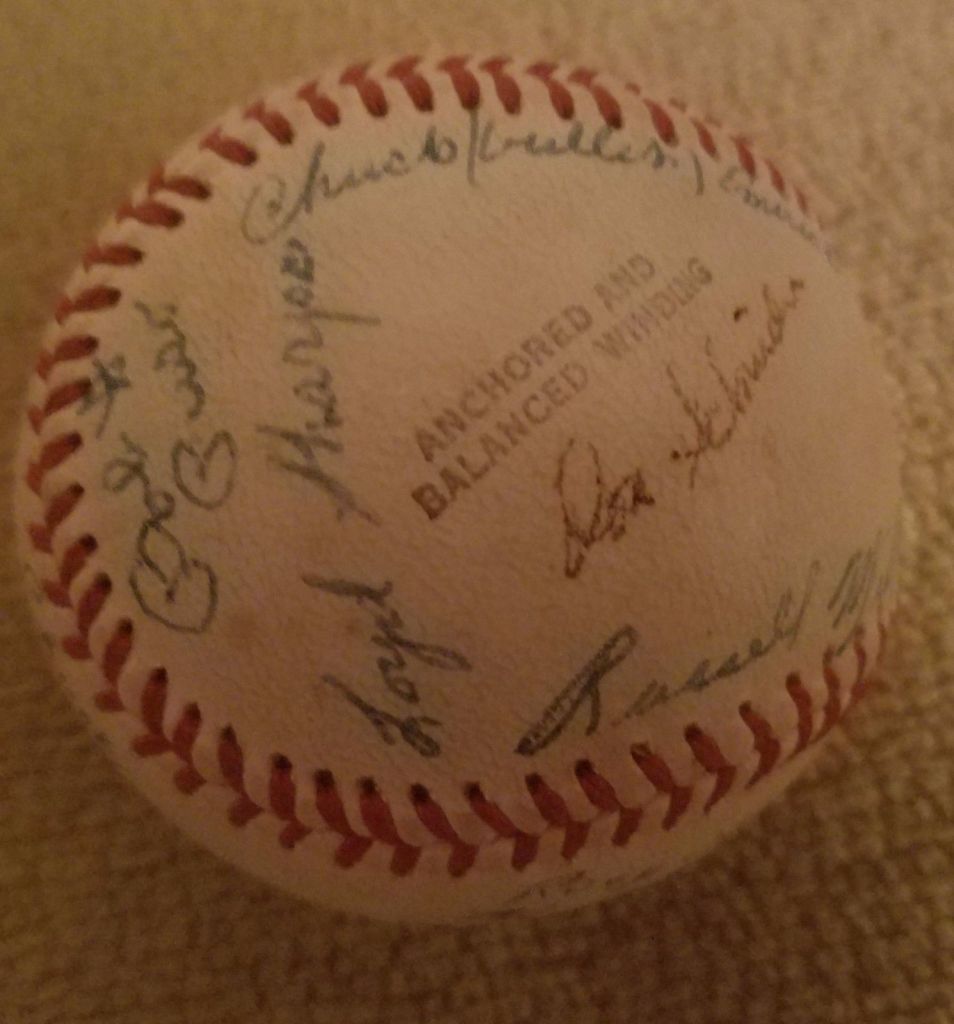
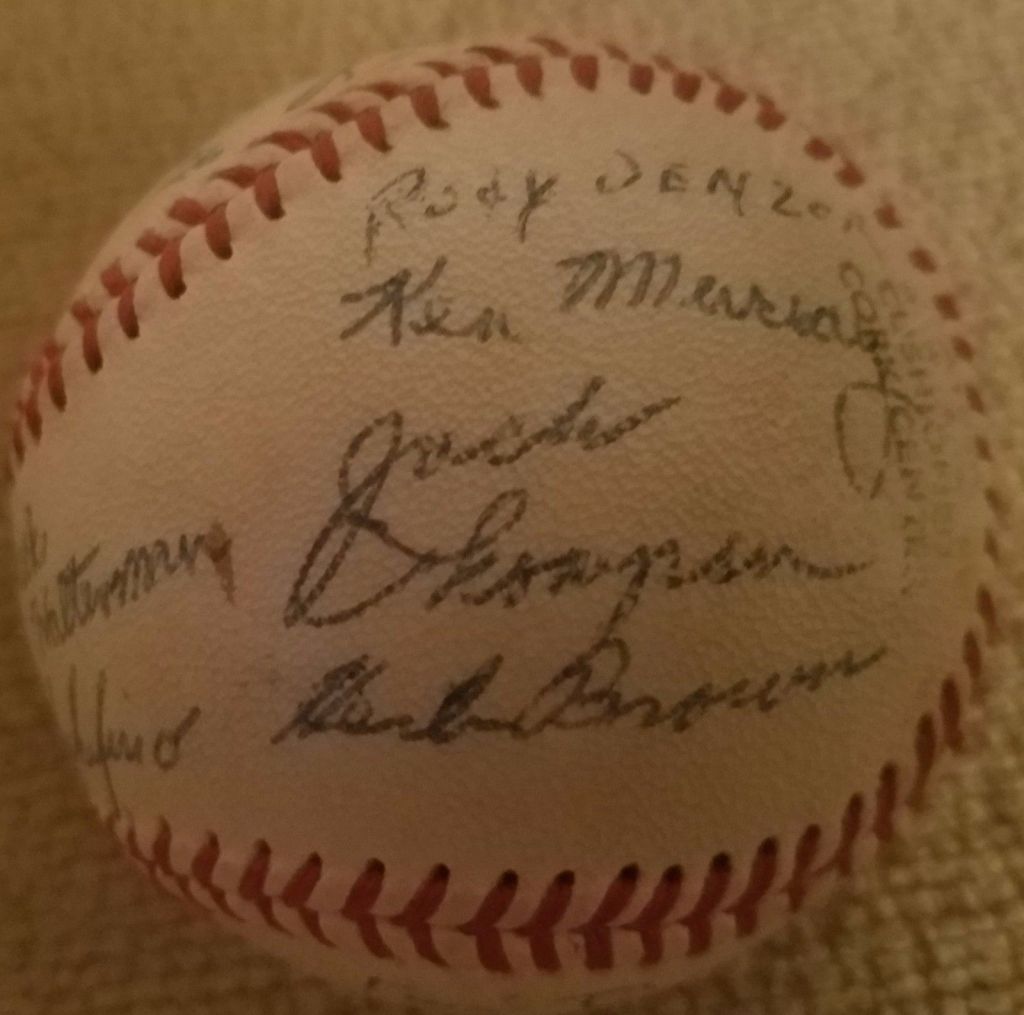

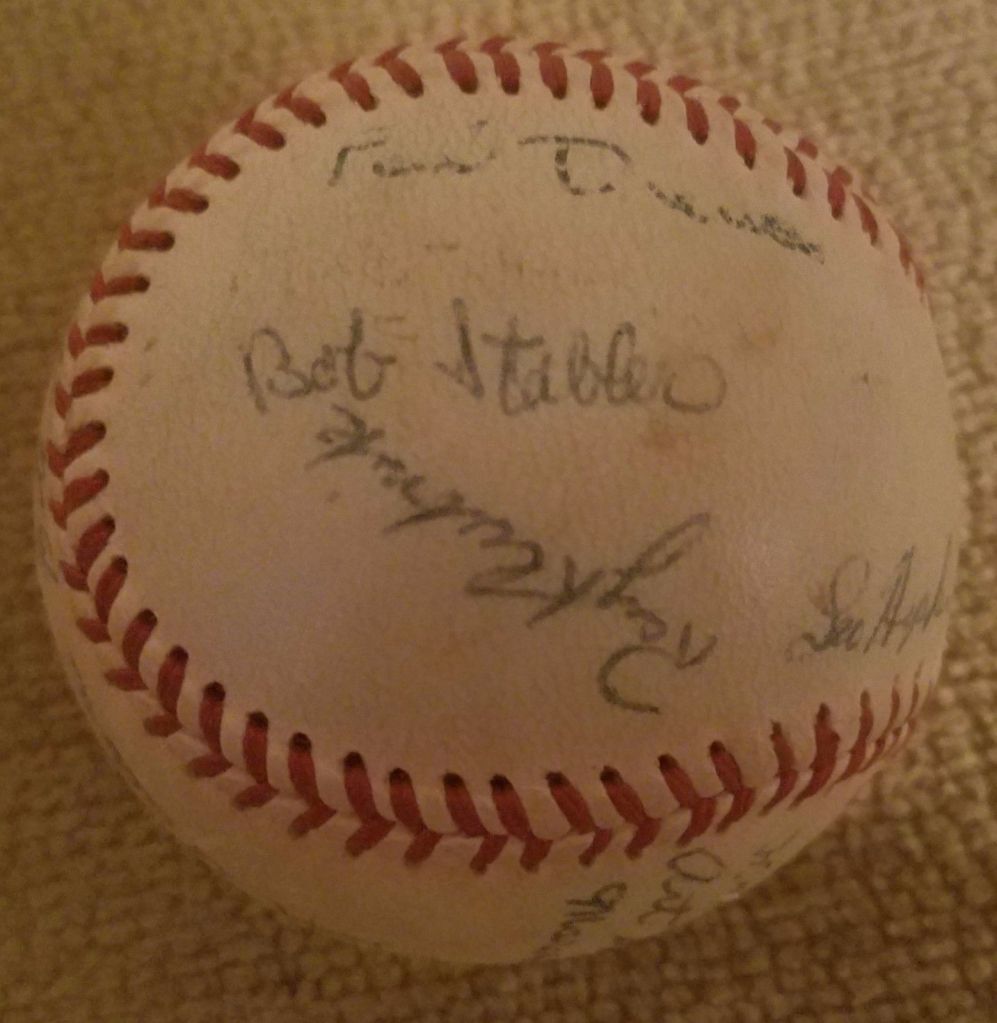


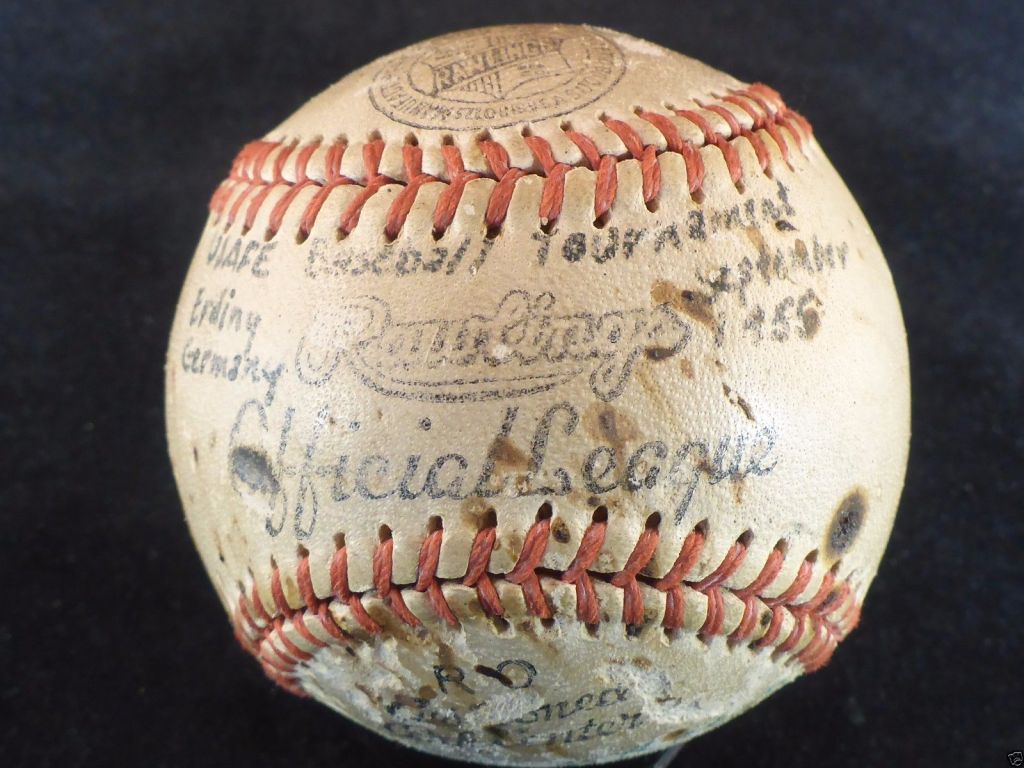


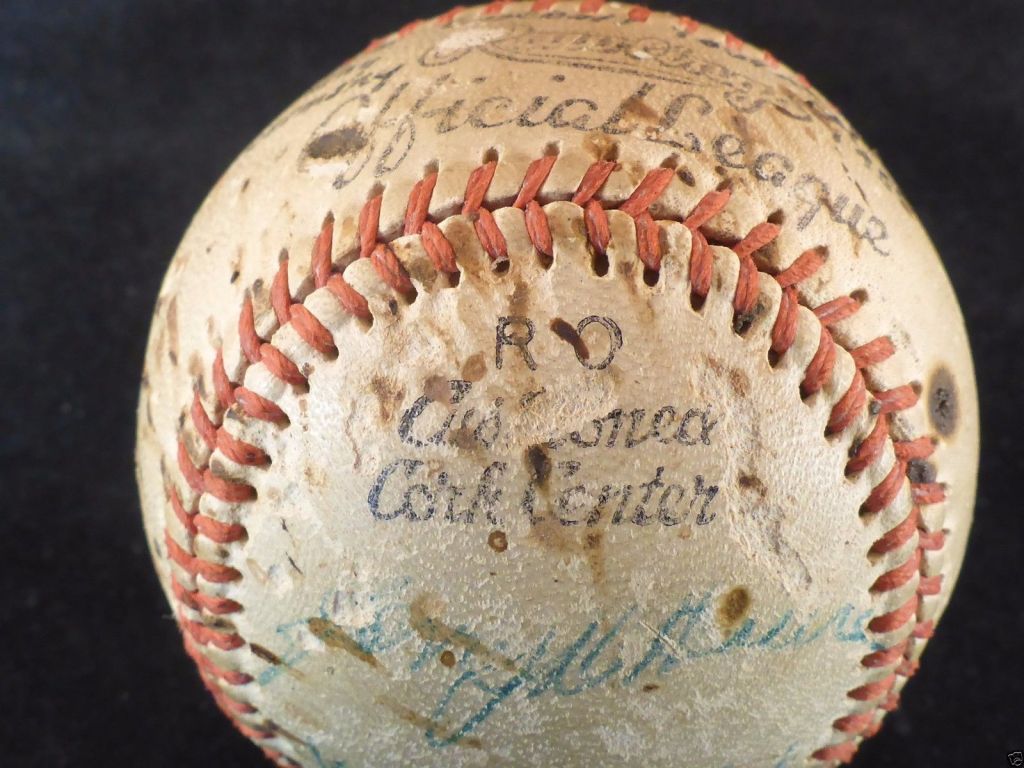

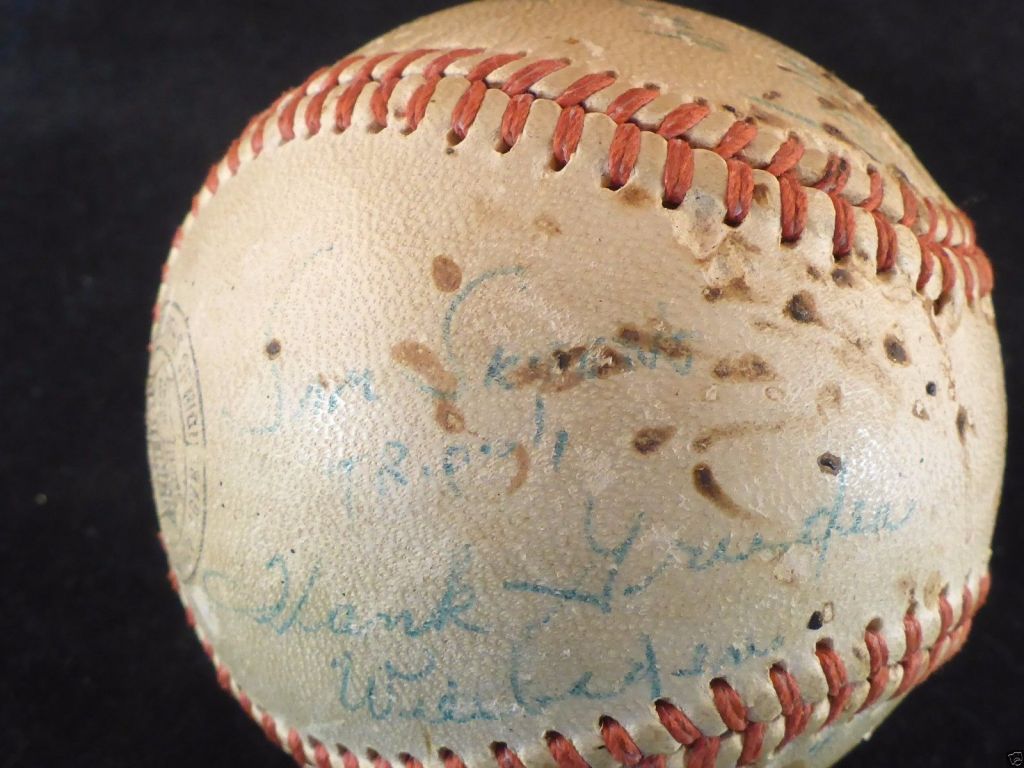
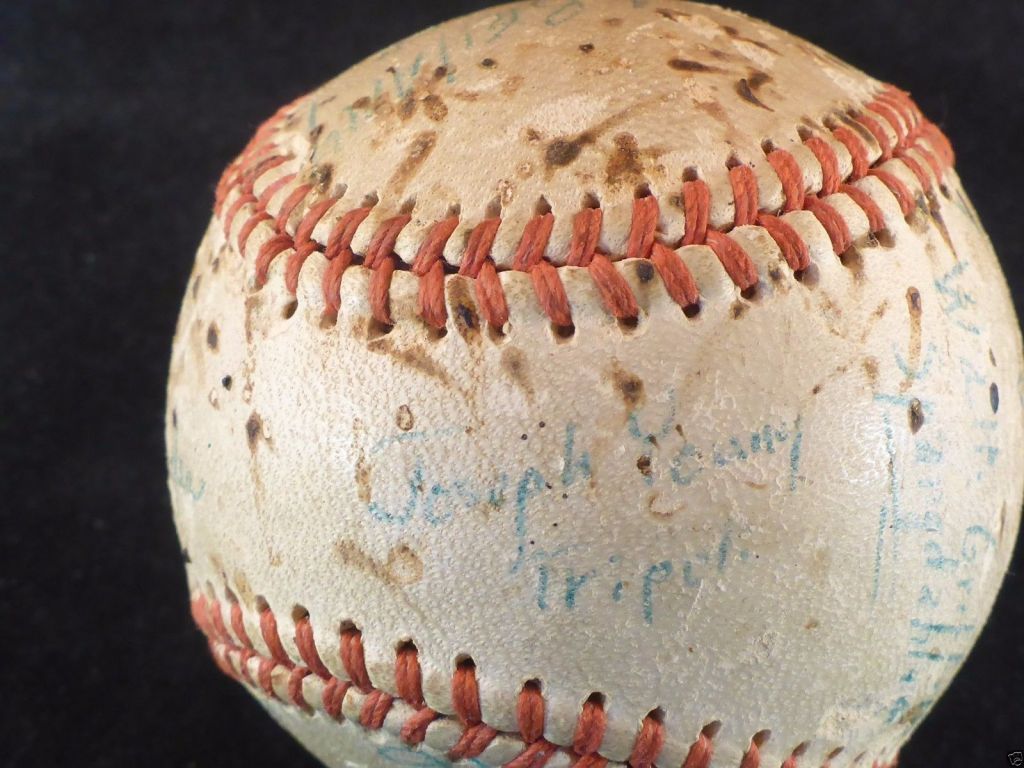



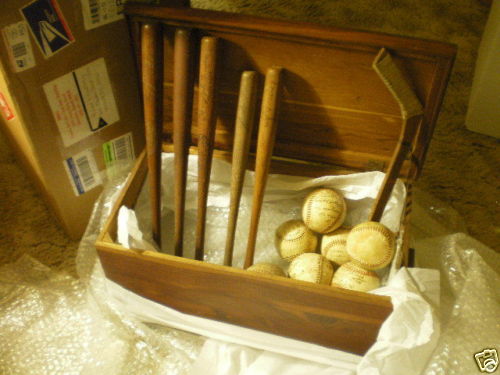

In 2012 when we initially encountered the baseballs, our lack of analysis and comparison led us to take the balls at face value.[3] The author of the auction listing, “giscootterjoe,” has been selling these baseballs since at least 2012 and likely even longer. The listings, enhanced with an image of an olive-drab canvas bucket with a dozen coffee-balls has been an online auction staple used to convince buyers of a discovered cache made available to collectors.
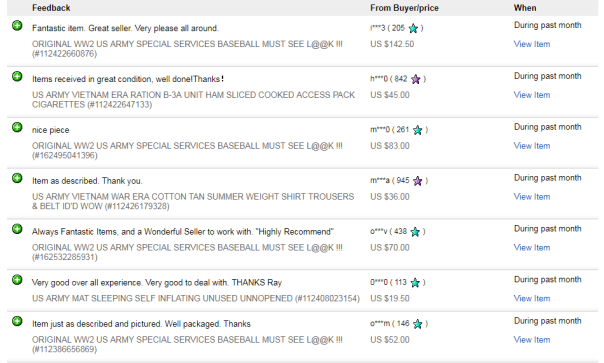
[1] Steven Keyman, Official Baseball Dating Guide Index (https://keymancollectibles.com/officialbaseballs.htm), KeyMay Collectibles (accessed February 7, 2024).
[2] Multiple manufacturers provided baseballs to the armed forces during the war. One fundraising program that provided balls and equipment to troops was the Professional Base Ball Fund that was originally established by Washington Senators owner Clark Griffith during the first world war. Two examples are: the Worth Professional Base Ball Fund Baseball (https://keymancollectibles.com/balls/worthprofessionalsasesallfundbaseball.htm) and the Rawlings No. R1 Professional Base Ball Fund WWII “Baseball Equipment Fund” Baseball (https://keymancollectibles.com/balls/rawlingsprofessionalbaseballfund.htm), KeyMan Collectibles (accessed February 7, 2024).
[3] “Skimming” Your Way to Overpaying for Militaria (https://chevronsanddiamonds.org/2016/06/13/skimming-your-way-to-overpaying-for-militaria), Chevrons and Diamonds (accessed February 7, 2024).

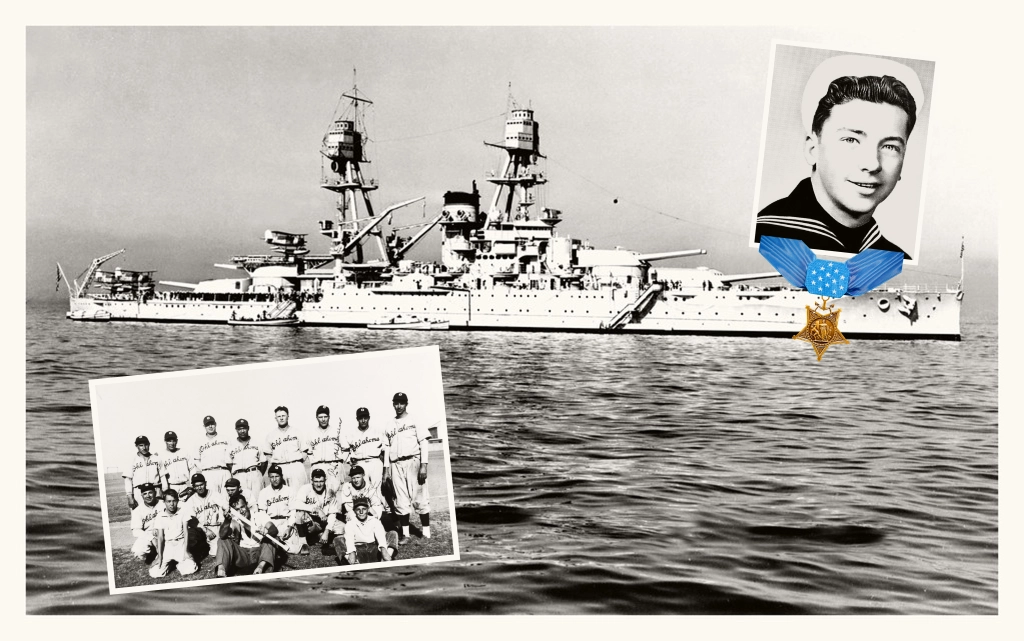

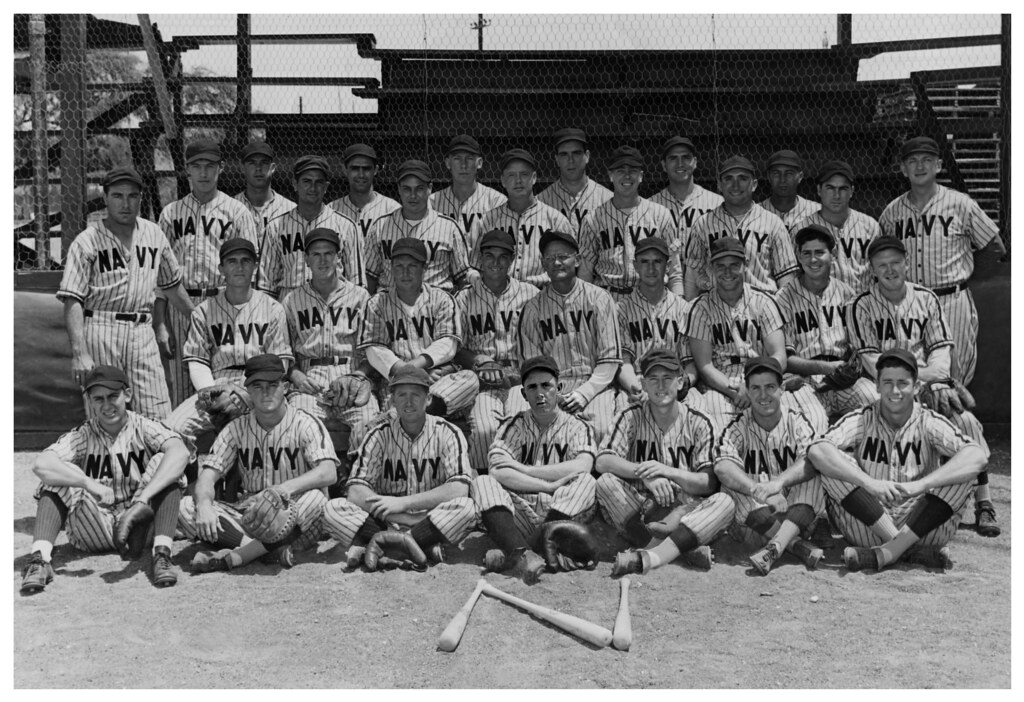
Leave a comment